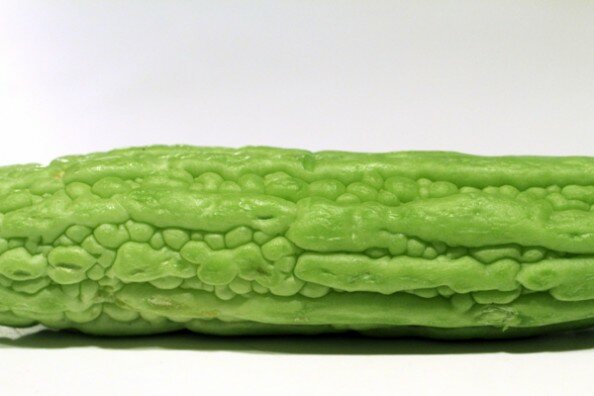
Tag Archives: market
Bitter Melon
Every Saturday for a couple summers in a row now, I’ve gotten herbs, baby bok choy, beans, and other greens from Vang Family Farm at Eastern Market. And every Saturday, I stare quizzically at the bumpy “Bitter Melon” bundled into packs of three with a rubber band and stacked neatly at the end of the table.
No longer.

Drawn in by its strange appearance — it looks like a brain mated with a cucumber – I bought my first bitter melons last Saturday. Not knowing where to begin, I took to the internet, where I discovered this particular gem:
Stir fry seemed like an easy, ideal preparation for my first foray into bitter melon, so a few days later, I surveyed the fridge and decided on a bitter melon stir fry with egg, shrimp, onion, garlic, and ginger. Aiming for something a bit more “Thai” tasting, I threw together a “sauce” of tamarind paste, fish sauce, soy, rice vinegar, siracha, and sugar.
Everything I read indicated that scooping out the spongy interior and the seeds was a “must,” but opinions were divided on the notion of parboiling or steaming the melons for a couple of minutes to remove some bitterness before frying. I figured I’d start out with the unadulterated melon, so we fried them without any prior heat treatment.
Accurately named, bitter melon is remarkably bitter. It’s not at all sharp like a grapefruit or charred like some coffee. Rather, it has a sort of dull, earthy, chalky bitterness that reminded me of a beer flavored excessively with Chinook hops. Larger pieces (and/or pieces with some of the white interior still clinging to the fruit) seemed to retain more bitterness throughout the process, which made sense.
We served it over rice and with some fresh cilantro on top, both of which were fine compliments. Next time, I might consider using pork to get some extra fat to help buffet the bitterness back a bit. That seems to be a common recipe combination for bitter melon online, and it certainly would hold back that chalky flavor more than shrimp and siracha.

Regardless, the bitterness after stir frying isn’t overwhelming by any stretch. I can understand why people sweat it with salt and cook it before completing the stir fry, but even without those measures, the bitter flavors are simply intense, not offensive.
While there appear to be no studies to corroborate the claims, many Asian countries ostensibly consider this fruit to be quite healthy. Regardless, while I’m in no rush to add bitter melon to my list of staple ingredients, I’ll be trying to use it more in the future. It’s truly unique and unquestionably interesting.